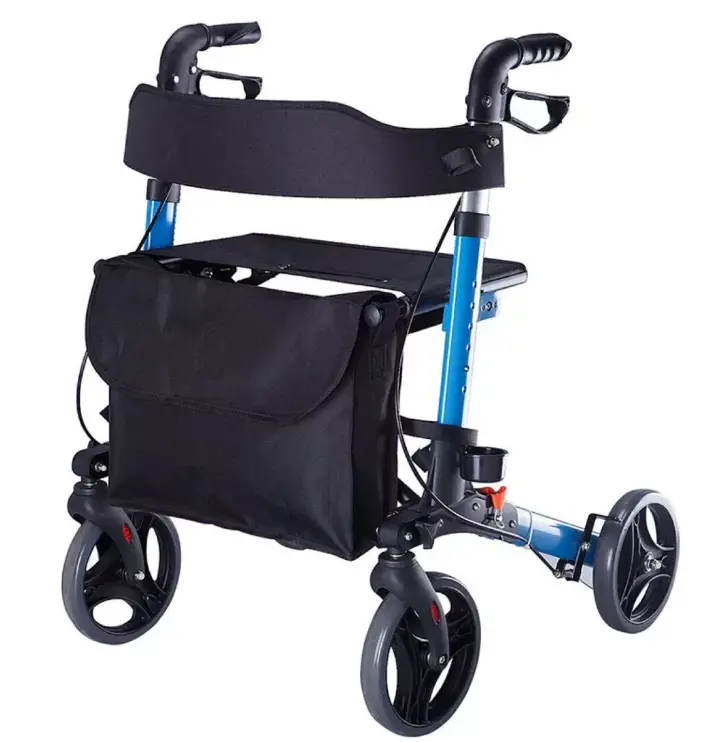Understanding the Different Kinds of Forearm Walkers
Forearm walkers are a critical tool in the early development and mobility of children, especially those with special needs. These versatile devices offer a gentle, low-impact way to build strength, coordination, and independence. By understanding the different kinds of forearm walkers and how they work, you can provide your child with the support they need to thrive.
The Role of Forearm Walkers in Early Development
Forearm walkers are not just assistive devices; they are essential tools for enhancing a childs physical and cognitive development. Designed to help children practice walking independently, these walkers offer a range of benefits, from building strength to improving balance. Whether your child has cerebral palsy, muscular dystrophy, or another motor disability, forearm walkers can play a pivotal role in their journey to independence.

What Are Forearm Walkers and Why Do They Matter?
Forearm walkers, also known as manual or motorized walkers, are devices designed to assist children in walking independently. These walkers are essential for children who may struggle with more complex or bulky equipment, providing a gentle and accessible alternative.
Manual Forearm Walkers
Manual walkers rely on the childs strength and coordination to move. They are simple in design and require the child to use their arms to push the walker forward. Manual walkers are often used by children with cerebral palsy or other motor disabilities, as they allow for a slower, more controlled movement. This controlled movement can help build coordination and muscle strength, making them ideal for children who need to develop their walking skills gradually.
Motorized Forearm Walkers
Motorized walkers use small electric motors to assist with movement, making them easier for children to control. These devices are often used by children who have limited strength or mobility, as they can help them walk with greater confidence and efficiency. Motorized walkers are generally more durable and versatile, making them a popular choice for parents and caregivers. They can provide the support needed for children to walk confidently, helping to build their confidence and independence.
Benefits of Forearm Walkers in Early Development
Forearm walkers are not just tools for physical therapy; they are versatile aids that can support a wide range of developmental needs. Here are some key benefits:
- Building Strength and Balance: Forearm walkers help children develop the muscles needed for walking, improving their overall strength and balance.
- Enhancing Coordination: By using the walker, children can practice coordination, which is essential for learning to walk and move confidently.
- Increasing Independence: Forearm walkers provide a tool for children to practice walking independently, which can be crucial for their confidence and self-reliance.
- Improving Confidence: The ability to walk with the assistance of a forearm walker can boost a childs confidence and motivation to continue developing their skills.
Choosing the Right Forearm Walker for Your Child
Selecting the right forearm walker for your child can be a challenging decision, as there are so many options available. To help you make an informed choice, consider the following factors:
- Safety: Ensure the walker is sturdy and secure, with no loose parts that could cause injury.
- Comfort: Choose a walker that fits your childs size and shape, and that allows them to move with ease.
- Durability: Look for a walker that is built to last, with a sturdy frame and durable materials.
- Ease of Use: Consider whether your child is capable of operating the walker independently or if it requires assistance.
Maintenance and Safety Guidelines for Forearm Walkers
Like any assistive device, forearm walkers require regular maintenance to ensure they remain safe and functional. Here are some tips for keeping your walker in great condition:
- Cleaning: Remove and clean any dirt or debris from the walkers surface to prevent rust or damage. Using a mild detergent and water, or baby wipes, to clean the walker regularly is recommended.
- Lubrication: Apply a small amount of non-toxic, food-grade lubricant, such as silicone-based lubricant, to the moving parts to reduce friction and make the walker easier to control.
- Storage: Store the walker in a safe place when not in use, away from children and pets to prevent accidents. Keep the walker in a dry, cool place to prevent damage from moisture.
Real-Life Examples and Testimonials
Real-life stories and testimonials can provide valuable insights into the impact of forearm walkers. Here are a couple of examples:
- Case Study 1: Sarah, a child with cerebral palsy, started using a manual forearm walker at age 2. With consistent use, her muscle strength and balance improved significantly. By the time she was 4, Sarah was able to walk independently without the walker.
- Testimonial 2: Johns grandson, who has muscular dystrophy, used a motorized forearm walker to practice walking. His parents were initially concerned about the cost and maintenance but found that the walker provided significant benefits. Johns grandsons confidence and independence improved, leading to a better overall quality of life.
The Importance of Early Intervention and Support
Forearm walkers are a vital tool for supporting childrens physical and developmental needs, offering a gentle and effective way to build strength, coordination, and independence. By understanding the different types of forearm walkers and choosing the right one for your child, you can provide them with the support they need to thrive. Early intervention is key to helping children with disabilities reach their full potential, and forearm walkers play an important role in this process.
Forearm walkers can be a game-changer for a childs mobility and independence. With proper care and maintenance, these devices can become an invaluable part of a childs daily routine, offering them confidence and the skills they need to lead fulfilling lives. By providing consistent support and guidance, you can help your child overcome challenges and achieve their goals. To summarize, forearm walkers are a crucial assistive device that can dramatically improve a childs quality of life.
